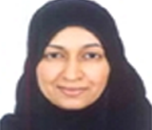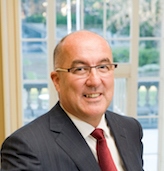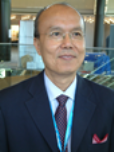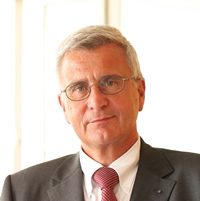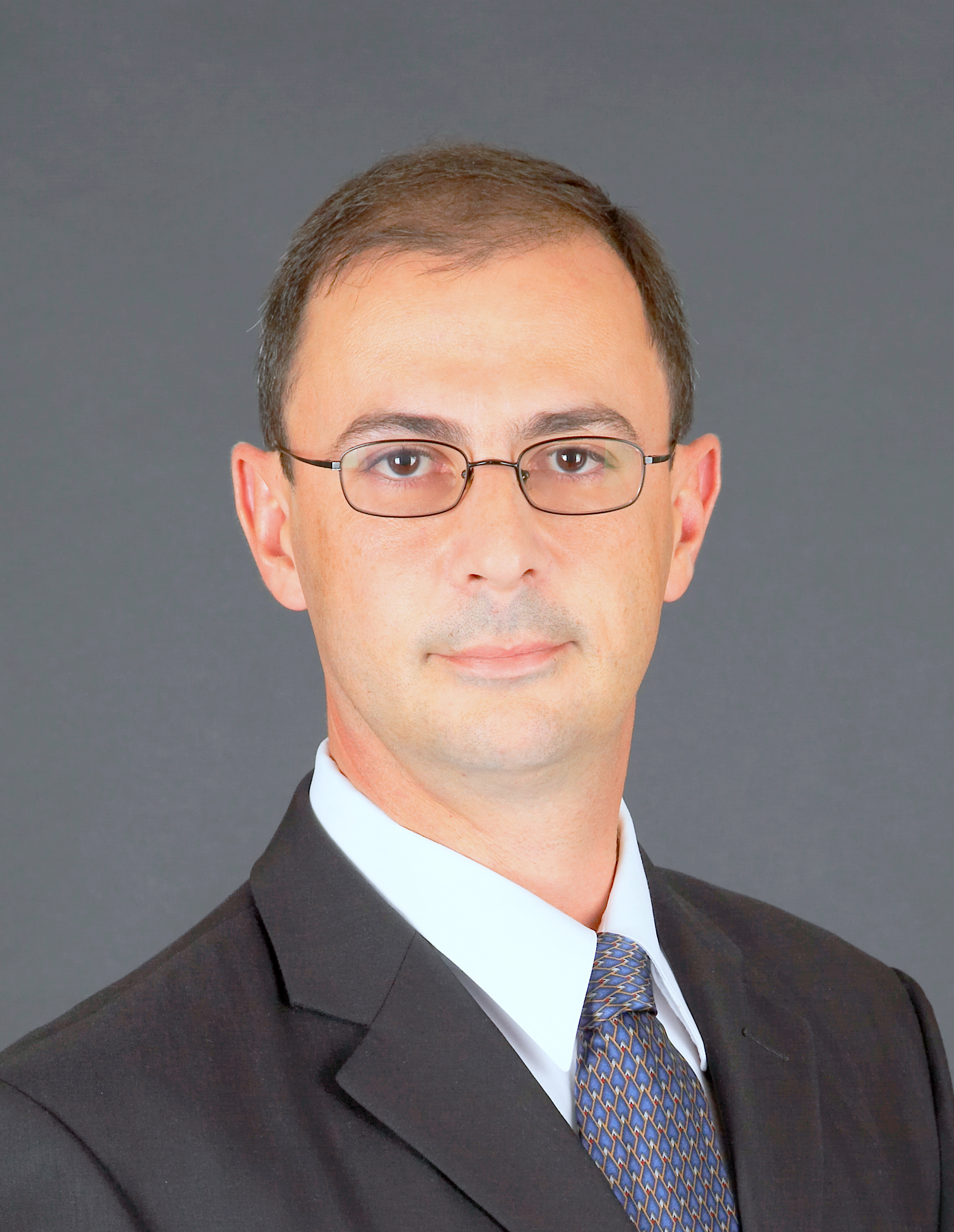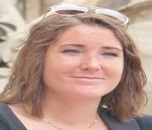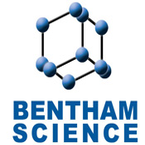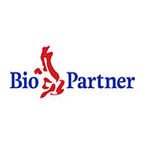Scientific Tracks
Track 1: Brain Disorders
Brain is the most complex and sensitive organ in the body. Minute damages to the brain might cause devastating consequences leading to several brain disorders. It may occur in early childhood causing developmental disorders such as autism and dyslexia .Psychiatric diseases such as depression and schizophrenia are typically diagnosed in teens or early adulthood and as we age we become increasingly susceptible to Alzheimer’s disease, Parkinson’s disease, stroke, and other diseases. This session encourages a discussion on the structural and functional aspects of the brain. There are 10 million individuals in the UK living with a neurological condition which significantly affects their lives. Basically, stroke, dementia, cerebral pain, Brain damage and epilepsy are the neurological conditions endured in the UK. It has been evaluated that the lifetime danger of developing Brain and other neural sensory system disease is 1 of every 133 for men and 1 of every 185 for ladies in the UK.
Related Associations:
Neuropathy Association and Nevus Outreach, Inc, Brain Injury Resource Center and Brain Trauma Foundation, Epilepsy Therapy Project and Exceptional Parent Magazine , Huntington's Disease Society of America Hydrocephalus Association, Multiple Sclerosis Association of America and Multiple Sclerosis Foundation, Multiple System Atrophy Coalition, Acoustic Neuroma Association and ADA Disability and Business Technical Assistance Program; Aicardi Syndrome Foundation and Alliance for Aging Research; ALS Association and ALS Therapy Development Institute; Alternating Hemiplegia of Childhood Foundation and Alzheimer's Drug Discovery Foundation.
Track 2: Brain Cancer & Tumors
Brain cancer is a disease of the brain in which cancer cells (malignant cells) arise in the brain tissue (cancer of the brain). Cancer cells grow to form a mass of cancer tissue (tumor) that interferes with brain functions such as muscle control, sensation, memory, and other normal body functions. Tumors composed of cancer cells are called malignant tumors, and those composed of mainly noncancerous cells are called benign tumors. Cancer cells that develop from brain tissue are called primary brain tumors while tumors that spread from other body sites to the brain are termed metastatic or secondary brain tumors. Only about 5% of brain tumors may be due to hereditary genetic conditions such as neurofibromatosis, tuberous sclerosis, and a few others.
Related Associations:
Neuropathy Association and Nevus Outreach, Inc, Brain Injury Resource Center and Brain Trauma Foundation, Epilepsy Therapy Project and Exceptional Parent Magazine , Huntington's Disease Society of America Hydrocephalus Association, Multiple Sclerosis Association of America and Multiple Sclerosis Foundation, Multiple System Atrophy Coalition, Acoustic Neuroma Association and ADA Disability and Business Technical Assistance Program; Aicardi Syndrome Foundation and Alliance for Aging Research; ALS Association and ALS Therapy Development Institute; Alternating Hemiplegia of Childhood Foundation and Alzheimer's Drug Discovery Foundation
Track 3: Neurological Disorders
Any disorder happen at the body nervous system is called as Neurological Disorders. Abnormalities in the brain, spinal cord or other nerves like Structural, biochemical or electrical can result as symptoms sometime. Neurological disorder symptoms might be loss of sensation, Poor Coordination, muscle weakness, paralysis, confusion, pain and altered levels of consciousness. Causes for the neurological disorder can be biochemical changes and sometimes can be physical injury to the brain, spinal cord, or nerves. But in some case the root cause can’t be determined only effects are seen.
Related Associations:
Neuropathy Association and Nevus Outreach, Inc, Brain Injury Resource Center and Brain Trauma Foundation, Epilepsy Therapy Project and Exceptional Parent Magazine , Huntington's Disease Society of America Hydrocephalus Association, Multiple Sclerosis Association of America and Multiple Sclerosis Foundation, Multiple System Atrophy Coalition, Acoustic Neuroma Association and ADA Disability and Business Technical Assistance Program; Aicardi Syndrome Foundation and Alliance for Aging Research; ALS Association and ALS Therapy Development Institute; Alternating Hemiplegia of Childhood Foundation and Alzheimer's Drug Discovery Foundation
Track 4: Neuroimmunology
Neuroimmunology is a field combining neuroscience, the study of the nervous system, and immunology, the study of the immune system. Neuroimmunologists seek to better understand the interactions of these two complex systems during development, homeostasis, and response to injuries. A long-term goal of this rapidly developing research area is to further develop our understanding of the pathology of certain neurological diseases, some of which have no clear etiology. Neuroimmunology contributes to development of new pharmacological treatments for several neurological conditions. Many types of interactions involve both the nervous and immune systems including the physiological functioning of the two systems in health and disease, malfunction of either and or both systems that leads to disorders, and the physical, chemical, and environmental stressors that affect the two systems on a daily basis
Related Associations:
Neuropathy Association and Nevus Outreach, Inc, Brain Injury Resource Center and Brain Trauma Foundation, Epilepsy Therapy Project and Exceptional Parent Magazine , Huntington's Disease Society of America Hydrocephalus Association, Multiple Sclerosis Association of America and Multiple Sclerosis Foundation, Multiple System Atrophy Coalition, Acoustic Neuroma Association and ADA Disability and Business Technical Assistance Program; Aicardi Syndrome Foundation and Alliance for Aging Research; ALS Association and ALS Therapy Development Institute; Alternating Hemiplegia of Childhood Foundation and Alzheimer's Drug Discovery Foundation
Track 5: Neurosurgery
Neurosurgery being a practical procedure for treating brain diseases and injuries has seen profound, unending advances in terms of the tools and technology used. These advances promise to enhance the accuracy of diagnosis and intraoperative procedures. Neurosurgery has come a long way from being regarded as one of the most complex procedures in the medical field to advances in simulation technology where neurosurgeons will be able to practice a surgical procedure or augment the actual surgery.
Related Associations:
Neuropathy Association and Nevus Outreach, Inc, Brain Injury Resource Center and Brain Trauma Foundation, Epilepsy Therapy Project and Exceptional Parent Magazine , Huntington's Disease Society of America Hydrocephalus Association, Multiple Sclerosis Association of America and Multiple Sclerosis Foundation, Multiple System Atrophy Coalition, Acoustic Neuroma Association and ADA Disability and Business Technical Assistance Program; Aicardi Syndrome Foundation and Alliance for Aging Research; ALS Association and ALS Therapy Development Institute; Alternating Hemiplegia of Childhood Foundation and Alzheimer's Drug Discovery Foundation
Track 6: Traumatic Brain Injury
Traumatic brain injury (TBI) is sudden damage to the brain caused by a blow or jolt to the head. Common causes include car or motorcycle crashes, falls, sports injuries, and assaults. Injuries can range from mild concussions to severe permanent brain damage. TBI may require intensive care and life-saving surgery. Those who survive a brain injury can face lasting effects in their physical and mental abilities as well as emotions and personality. Most people who suffer moderate to severe TBI will need rehabilitation to recover and relearn skills.
Related Associations:
Neuropathy Association and Nevus Outreach, Inc, Brain Injury Resource Center and Brain Trauma Foundation, Epilepsy Therapy Project and Exceptional Parent Magazine , Huntington's Disease Society of America Hydrocephalus Association, Multiple Sclerosis Association of America and Multiple Sclerosis Foundation, Multiple System Atrophy Coalition, Acoustic Neuroma Association and ADA Disability and Business Technical Assistance Program; Aicardi Syndrome Foundation and Alliance for Aging Research; ALS Association and ALS Therapy Development Institute; Alternating Hemiplegia of Childhood Foundation and Alzheimer's Drug Discovery Foundation
Track 7: Mental Retardation
Mental retardation, is characterized by below-average intelligence or mental ability and a lack of skills necessary for day-to-day living. People with intellectual disabilities can and do learn new skills, but they learn them more slowly. There are varying degrees of intellectual disability, from mild to profound.
Related Associations:
Neuropathy Association and Nevus Outreach, Inc, Brain Injury Resource Center and Brain Trauma Foundation, Epilepsy Therapy Project and Exceptional Parent Magazine , Huntington's Disease Society of America Hydrocephalus Association, Multiple Sclerosis Association of America and Multiple Sclerosis Foundation, Multiple System Atrophy Coalition, Acoustic Neuroma Association and ADA Disability and Business Technical Assistance Program; Aicardi Syndrome Foundation and Alliance for Aging Research; ALS Association and ALS Therapy Development Institute; Alternating Hemiplegia of Childhood Foundation and Alzheimer's Drug Discovery Foundation
Track 8: Neuroinflammation
Neuroinflammation is inflammation of the nervous tissue. It may be initiated in response to a variety of cues, including infection, traumatic brain injury, toxic metabolites, or autoimmunity. In the central nervous system (CNS), including the brain and spinal cord, microglia are the resident innate immune cells that are activated in response to these cues. The CNS is typically an immunologically privileged site because peripheral immune cells are generally blocked by the blood–brain barrier (BBB), a specialized structure composed of astrocytes and endothelial cells.
Related Associations:
Neuropathy Association and Nevus Outreach, Inc, Brain Injury Resource Center and Brain Trauma Foundation, Epilepsy Therapy Project and Exceptional Parent Magazine , Huntington's Disease Society of America Hydrocephalus Association, Multiple Sclerosis Association of America and Multiple Sclerosis Foundation, Multiple System Atrophy Coalition, Acoustic Neuroma Association and ADA Disability and Business Technical Assistance Program; Aicardi Syndrome Foundation and Alliance for Aging Research; ALS Association and ALS Therapy Development Institute; Alternating Hemiplegia of Childhood Foundation and Alzheimer's Drug Discovery Foundation.
Track 9: Pathophysiology of Brain Disorders
Brain disorder occurs when there is a damage or disruption to the brain or brains function after the birth of an individual. Damaged brain will causes changes in the memory, sensation and sometimes even at personality. It can occur due to falls, accidents, assault, lack of oxygen, concussion and other trauma which causes a brain diseases like Alzheimer's disease and other dementia, degenerative diseases, Parkinson's disease and brain tumors. Intelligence is usually not affected by disorder, although there are usually cognitive changes such as problems with memory, concentration and attention. Brain disorders are considered as serious health problem facing by the society.
Related Associations:
Neuropathy Association and Nevus Outreach, Inc, Brain Injury Resource Center and Brain Trauma Foundation, Epilepsy Therapy Project and Exceptional Parent Magazine , Huntington's Disease Society of America Hydrocephalus Association, Multiple Sclerosis Association of America and Multiple Sclerosis Foundation, Multiple System Atrophy Coalition, Acoustic Neuroma Association and ADA Disability and Business Technical Assistance Program; Aicardi Syndrome Foundation and Alliance for Aging Research; ALS Association and ALS Therapy Development Institute; Alternating Hemiplegia of Childhood Foundation and Alzheimer's Drug Discovery Foundation
Track 10: Cerebrospinal Complications
Cerebrospinal Fluid (CSF) secures the brain and spinal cord. CSF spills happen through a correspondence between the covering of the Brain and the nose. These correspondences may happen suddenly or result from injury or earlier sinonasal surgery. Entanglements may happen if the reason is surgery or injury. Diseases after surgery or injury can prompt meningitis and genuine intricacies, for example, swelling of the Brain. Most CSF spills are a complexity of a spinal tap or surgery. This session directs the attention to brain complications due to intricacies of the CSF.
Related Associations:
Neuropathy Association and Nevus Outreach, Inc, Brain Injury Resource Center and Brain Trauma Foundation, Epilepsy Therapy Project and Exceptional Parent Magazine , Huntington's Disease Society of America Hydrocephalus Association, Multiple Sclerosis Association of America and Multiple Sclerosis Foundation, Multiple System Atrophy Coalition, Acoustic Neuroma Association and ADA Disability and Business Technical Assistance Program; Aicardi Syndrome Foundation and Alliance for Aging Research; ALS Association and ALS Therapy Development Institute; Alternating Hemiplegia of Childhood Foundation and Alzheimer's Drug Discovery Foundation
Track 11: Brain Complications
In Medical terms Complication is referred as unfavorable condition of a disease or worst consequences of particular disease causing high risk health problems. Traumatic brain injury sometimes increases the risk of complication greater like Coma (unconscious), Vegetative state (Widespread damage to the brain), minimally conscious state (altered consciousness), Locked-in syndrome (Locked in-state), Brain death (brain cell death).In case of Brain Cancer sometimes life life-threatening complications happens For example Sudden death due to the obstructed flow of cerebrospinal fluid from the third ventricle and sometimes sever complications like paralysis, loss of vision, loss of speech, unconsciousness by the sudden Hemorrhagic stroke.
Related Associations:
Neuropathy Association and Nevus Outreach, Inc, Brain Injury Resource Center and Brain Trauma Foundation, Epilepsy Therapy Project and Exceptional Parent Magazine , Huntington's Disease Society of America Hydrocephalus Association, Multiple Sclerosis Association of America and Multiple Sclerosis Foundation, Multiple System Atrophy Coalition, Acoustic Neuroma Association and ADA Disability and Business Technical Assistance Program; Aicardi Syndrome Foundation and Alliance for Aging Research; ALS Association and ALS Therapy Development Institute; Alternating Hemiplegia of Childhood Foundation and Alzheimer's Drug Discovery Foundation.
Track 12: Neurodegeneration & Aging Disorders
Neurodegeneration is the process of losing Neurons within the Brain and spinal cord. Neuron is build blocks for the nervous system including brain and spinal cord. Neurons cannot be regenerated or replace by body normally. Ageing affects many cellular processes that progress to the neurodegeneration and also age-related changes in cellular function will progress to the pathogenesis of PD. well known Neurodegenerative disease are Alzheimer's disease (AD), Parkinson's disease (PD), Huntington's disease (HD) and amyotrophic lateral sclerosis (ALS). Neurodegenerative diseases are genetically inherited causative genes for neurodegenerative disease has been identified by using recent advance in the genetics, Drug therapies were provided for Neurodegenerative disease by three treatment categories symptomatic, protective and curative.
Related Associations:
Neuropathy Association and Nevus Outreach, Inc, Brain Injury Resource Center and Brain Trauma Foundation, Epilepsy Therapy Project and Exceptional Parent Magazine , Huntington's Disease Society of America Hydrocephalus Association, Multiple Sclerosis Association of America and Multiple Sclerosis Foundation, Multiple System Atrophy Coalition, Acoustic Neuroma Association and ADA Disability and Business Technical Assistance Program; Aicardi Syndrome Foundation and Alliance for Aging Research; ALS Association and ALS Therapy Development Institute; Alternating Hemiplegia of Childhood Foundation and Alzheimer's Drug Discovery Foundation.
Track 13: Pediatric Neurology
Pediatric neurology is a blend of both neurology and pediatrics. Pediatric neurology is a branch of medication primarily managing scatters of the nervous system. Pediatric neurology manages the determination and treatment of all maladies including the focal and fringe sensory system and its subdivisions, the autonomic sensory system and the physical sensory system, including their covers, veins and all effector tissues, for example, muscles. A medicinal expert who represents considerable authority in this field of pediatric neurology is called pediatric neurologists.
Related Associations:
Neuropathy Association and Nevus Outreach, Inc, Brain Injury Resource Center and Brain Trauma Foundation, Epilepsy Therapy Project and Exceptional Parent Magazine , Huntington's Disease Society of America Hydrocephalus Association, Multiple Sclerosis Association of America and Multiple Sclerosis Foundation, Multiple System Atrophy Coalition, Acoustic Neuroma Association and ADA Disability and Business Technical Assistance Program; Aicardi Syndrome Foundation and Alliance for Aging Research; ALS Association and ALS Therapy Development Institute; Alternating Hemiplegia of Childhood Foundation and Alzheimer's Drug Discovery Foundation.
Track 14: Neuropharmacology
Neuropharmacology is the study of how drugs affect cellular function in the nervous system, and the neural mechanisms through which they influence behavior. There are two main branches of neuropharmacology one is behavioral and the other one is molecular. Behavioral neuropharmacology focuses on the study of how drugs affect human behavior (Neuropsychopharmacology), including the study of how drug dependence and addiction affect the human brain. Molecular neuropharmacology involves the study of neurons and their neurochemical interactions, with the overall goal of developing drugs that have beneficial effects on neurological function. Both of these fields are closely connected, since both are concerned with the interactions of neurotransmitters, neuropeptides, neurohormones, neuromodulators, enzymes, second messengers, co-transporters, ion channels, and receptor proteins in the central and peripheral nervous systems. Studying these interactions, researchers are developing drugs to treat many different neurological disorders, including pain, neurodegenerative diseases.
Related Associations:
Neuropathy Association and Nevus Outreach, Inc, Brain Injury Resource Center and Brain Trauma Foundation, Epilepsy Therapy Project and Exceptional Parent Magazine , Huntington's Disease Society of America Hydrocephalus Association, Multiple Sclerosis Association of America and Multiple Sclerosis Foundation, Multiple System Atrophy Coalition, Acoustic Neuroma Association and ADA Disability and Business Technical Assistance Program; Aicardi Syndrome Foundation and Alliance for Aging Research; ALS Association and ALS Therapy Development Institute; Alternating Hemiplegia of Childhood Foundation and Alzheimer's Drug Discovery Foundation.
Track 15: Neurology of Brain
A hereditary Brain disease is caused by a variety or a change in a gene. Hereditary Brain issue influences the improvement and capacity of the cerebrum. The indications of Brain injuries normally rely upon the reason for the condition. Cerebrum issue may influence the fundamental territories of your mind that control how we move, think, and carry on. A few tumours can tighten the veins in mind.
Related Associations:
Neuropathy Association and Nevus Outreach, Inc, Brain Injury Resource Center and Brain Trauma Foundation, Epilepsy Therapy Project and Exceptional Parent Magazine , Huntington's Disease Society of America Hydrocephalus Association, Multiple Sclerosis Association of America and Multiple Sclerosis Foundation, Multiple System Atrophy Coalition, Acoustic Neuroma Association and ADA Disability and Business Technical Assistance Program; Aicardi Syndrome Foundation and Alliance for Aging Research; ALS Association and ALS Therapy Development Institute; Alternating Hemiplegia of Childhood Foundation and Alzheimer's Drug Discovery Foundation.
Track 16: Mental health
Mental health encompasses our emotional, psychological, and social well-being, crucial for how we think, feel, and act. It affects daily life, relationships, and productivity. Good mental health allows us to handle stress, make decisions, and cope with challenges. Mental illnesses, such as anxiety and depression, impact thoughts, feelings, and behaviors, requiring support and treatment. Awareness and destigmatization are vital to encourage seeking help when needed. Self-care practices, like exercise and mindfulness, promote mental well-being. Addressing mental health openly fosters resilience and a balanced life, highlighting its significance in overall health and quality of life.
Related Associations:
Neuropathy Association and Nevus Outreach, Inc, Brain Injury Resource Center and Brain Trauma Foundation, Epilepsy Therapy Project and Exceptional Parent Magazine , Huntington's Disease Society of America Hydrocephalus Association, Multiple Sclerosis Association of America and Multiple Sclerosis Foundation, Multiple System Atrophy Coalition, Acoustic Neuroma Association and ADA Disability and Business Technical Assistance Program; Aicardi Syndrome Foundation and Alliance for Aging Research; ALS Association and ALS Therapy Development Institute; Alternating Hemiplegia of Childhood Foundation and Alzheimer's Drug Discovery Foundation
Track 17: Addiction & Brain Disorders
Addiction is a disorder of brain (Brain Disorder) and its complex condition. Addiction is also known as chronic disorder which includes psychological, biological, environmental factors and social factor influenced by development and maintenance. Genetic might be the risk factor for addiction sometimes For example engaging in certain behaviors (such as gambling) and the way the body processes alcohol or other drugs. Addiction can be prevented, treated and managed by the healthcare professionals with the co-operation of family or peer support like social worker. Addiction directly affects the function of brain and body which will result in problems in families, relationship, friends, schools, workplaces and neighborhoods.
Related Associations:
Neuropathy Association and Nevus Outreach, Inc, Brain Injury Resource Center and Brain Trauma Foundation, Epilepsy Therapy Project and Exceptional Parent Magazine , Huntington's Disease Society of America Hydrocephalus Association, Multiple Sclerosis Association of America and Multiple Sclerosis Foundation, Multiple System Atrophy Coalition, Acoustic Neuroma Association and ADA Disability and Business Technical Assistance Program; Aicardi Syndrome Foundation and Alliance for Aging Research; ALS Association and ALS Therapy
Development Institute; Alternating Hemiplegia of Childhood Foundation and Alzheimer's Drug Discovery Foundation
Track 18: Analysis, Assessment and Diagnosis of Brain Disorders
Early diagnosis of brain disorders is crucial to determining the prognosis and treatment for the patient. Over the decades, there has been immense advancements in the diagnostic tools and strategies for various brain disorders. Symptomatic tests and strategies are imperative apparatuses that assist doctors to affirm or preclude the development of a neurological diseases or other medicinal condition. Tests and methods, for example, Chorionic villus inspecting, Pre-symptomatic testing, Biomarkers, Molecular diagnostics, Neuroimaging and Human Neuroimaging are regularly used to analysis. This session brings together researchers from around the world and provides a platform for the discussion of newer strategies of early diagnosis of various brain disorders to ensure better survival rates of individuals.
Related Associations:
Neuropathy Association and Nevus Outreach, Inc, Brain Injury Resource Center and Brain Trauma Foundation, Epilepsy Therapy Project and Exceptional Parent Magazine , Huntington's Disease Society of America Hydrocephalus Association, Multiple Sclerosis Association of America and Multiple Sclerosis Foundation, Multiple System Atrophy Coalition, Acoustic Neuroma Association and ADA Disability and Business Technical Assistance Program; Aicardi Syndrome Foundation and Alliance for Aging Research; ALS Association and ALS Therapy Development Institute; Alternating Hemiplegia of Childhood Foundation and Alzheimer's Drug Discovery Foundation.
Track 19: Stem Cell Therapies
Stem cell therapy treats various disorders by using stem cell more than 80 disorders effectively treated by stem cell therapy which includes neuromuscular and degenerative disorders. Neurodegenerative is the loss of neuron which can’t be regenerated by the body Stem cell technology has become an important option in diagnosis and treatment of Neurodegenerative diseases including PD, Huntington's disease (HD), Alzheimer's and amyotrophic lateral sclerosis (ALS). Spinal cord injuries are common traumas which occur in two different ways stem cell therapy repair and regenerate peripheral nerves.
Related Associations:
Neuropathy Association and Nevus Outreach, Inc, Brain Injury Resource Center and Brain Trauma Foundation, Epilepsy Therapy Project and Exceptional Parent Magazine , Huntington's Disease Society of America Hydrocephalus Association, Multiple Sclerosis Association of America and Multiple Sclerosis Foundation, Multiple System Atrophy Coalition, Acoustic Neuroma Association and ADA Disability and Business Technical Assistance Program; Aicardi Syndrome Foundation and Alliance for Aging Research; ALS Association and ALS Therapy Development Institute; Alternating Hemiplegia of Childhood Foundation and Alzheimer's Drug Discovery Foundation
Track 20: Neuro Oncology
Neuro-oncology is the study of brain and spinal cord neoplasms, many of which are (at least eventually) very dangerous and life-threatening (astrocytoma, glioma, glioblastoma multiforme, ependymoma, pontine glioma, and brain stem tumors are among the many examples of these.
Related Associations:
Neuropathy Association and Nevus Outreach, Inc, Brain Injury Resource Center and Brain Trauma Foundation, Epilepsy Therapy Project and Exceptional Parent Magazine , Huntington's Disease Society of America Hydrocephalus Association, Multiple Sclerosis Association of America and Multiple Sclerosis Foundation, Multiple System Atrophy Coalition, Acoustic Neuroma Association and ADA Disability and Business Technical Assistance Program; Aicardi Syndrome Foundation and Alliance for Aging Research; ALS Association and ALS Therapy Development Institute; Alternating Hemiplegia of Childhood Foundation and Alzheimer's Drug Discovery Foundation.
Track 21: Neurodegenerative Diseases
Neurodegenerative diseases are a group of disorders characterized by the progressive degeneration of nerve cells (neurons) in the brain and nervous system. These diseases cause a decline in cognitive and motor functions, often leading to disability and loss of independence. Common neurodegenerative diseases include Alzheimer's disease, Parkinson's disease, Huntington's disease, and amyotrophic lateral sclerosis (ALS). Each condition affects different parts of the nervous system and has distinct symptoms, such as memory loss, tremors, muscle weakness, and impaired coordination. The exact causes are not fully understood, but genetic, environmental, and lifestyle factors contribute to their development. While treatments exist to manage symptoms, there are currently no cures, and research continues to seek better therapies and prevention strategies.
Related Associations:
Neuropathy Association and Nevus Outreach, Inc, Brain Injury Resource Center and Brain Trauma Foundation, Epilepsy Therapy Project and Exceptional Parent Magazine , Huntington's Disease Society of America Hydrocephalus Association, Multiple Sclerosis Association of America and Multiple Sclerosis Foundation, Multiple System Atrophy Coalition, Acoustic Neuroma Association and ADA Disability and Business Technical Assistance Program; Aicardi Syndrome Foundation and Alliance for Aging Research; ALS Association and ALS Therapy Development Institute; Alternating Hemiplegia of Childhood Foundation and Alzheimer's Drug Discovery Foundation.
